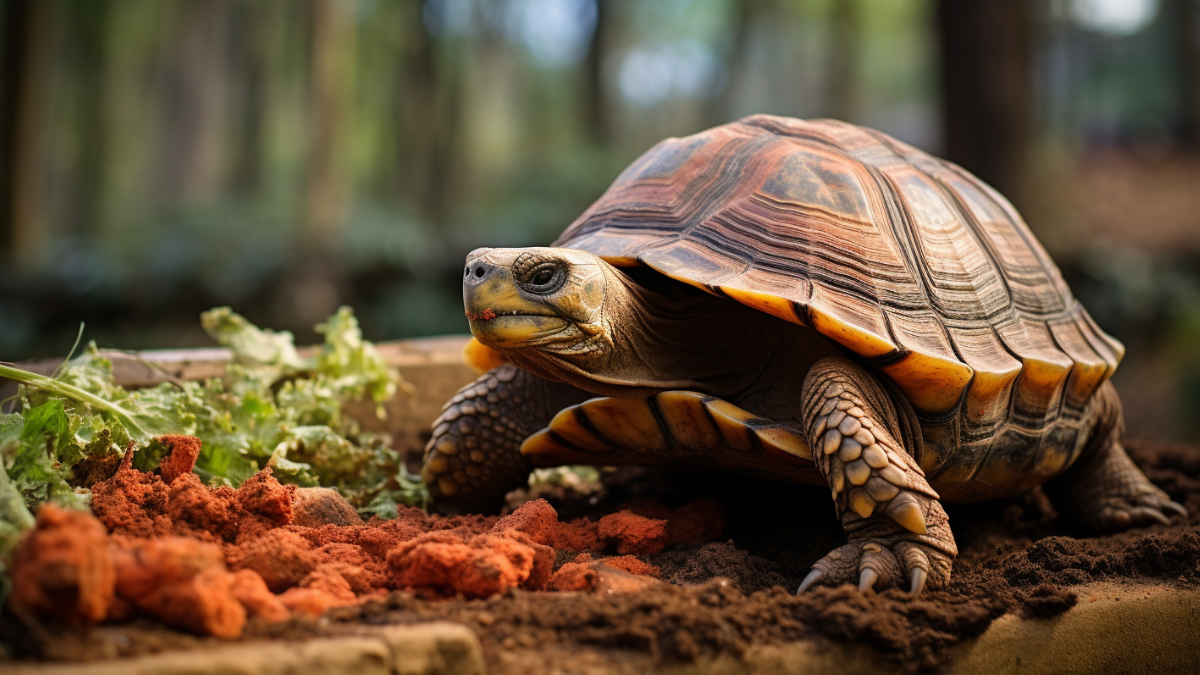Dehydrated Tortoise: What To Do To Help?
A tortoise can avoid dehydration by reabsorbing water from the urine in its bladder. However, even with this handy adaptation, the tortoise will get dehydrated if it goes without water for too long.
Dehydrated tortoise: What to do to help? There are several actions you can take to help save a dehydrated tortoise, including the following;
- Provide some water
- Adjust the temperature and humidity
- Soak the tortoise
- Offer water-rich foods
- Seek a vet’s guidance.
Keep reading to learn more about spotting a dehydrated tortoise, what to do, and some tips to protect your pet from dehydration.
Common Signs Of Tortoise Dehydration
Contents
If you notice the following symptoms, your tortoise is probably dehydrated.
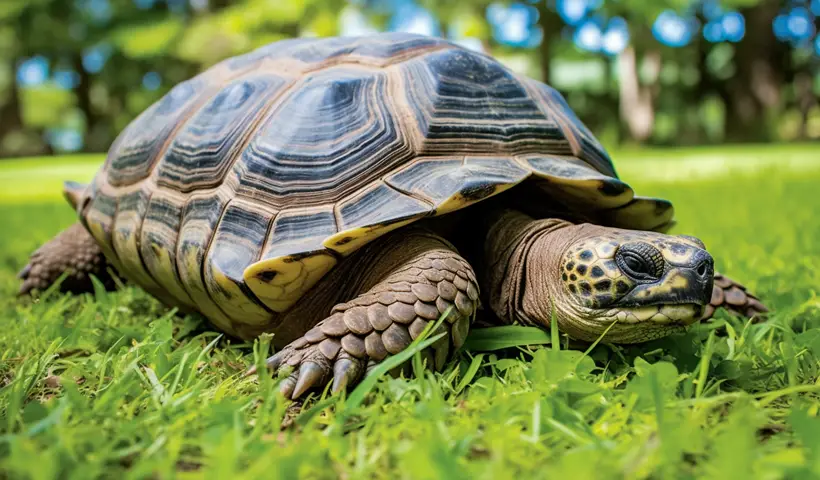
1. Sunken eyes
Sunken eyes are one of the most noticeable signs that a tortoise is dehydrated. The more dehydrated the tortoise is, the more recessed the eyes will appear. In some cases, severe dehydration causes the tortoise to close its eyes completely.
2. Dry skin
Dehydrated tortoises often have dry, wrinkled skin and a dry shell. The head and neck of the tortoise are the easiest places to observe dry skin because scales cover its tail and legs.
3. Lethargy
A dehydrated tortoise can appear disinterested in any activity like walking or burrowing and generally show a lack of energy.
4. Weight loss
Though most of a tortoise’s body is hidden beneath the shell, you may notice a drastic weight loss if the animal is dehydrated. It will also be much easier to pick up the tortoise.
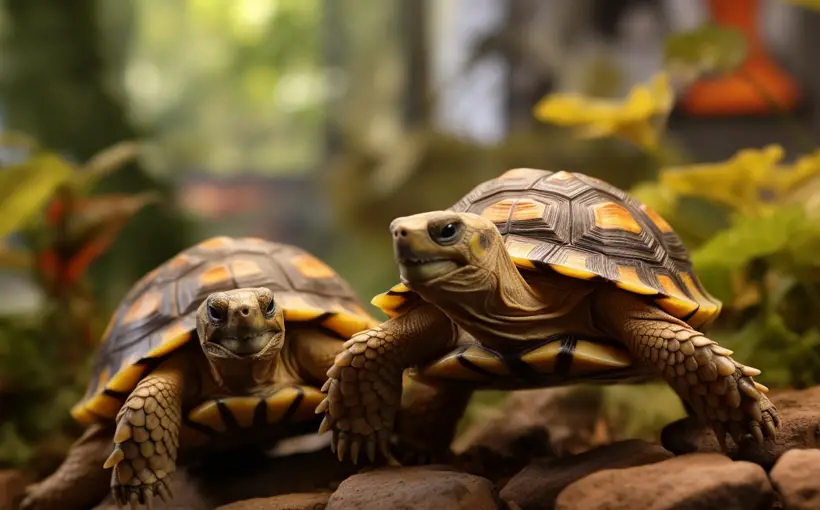
5. Lack of appetite
When dehydrated, tortoises often exhibit reduced appetite, refusing to eat for long periods.
6. Dry feces and dark urine
A dehydrated tortoise will excrete feces that are drier than usual. The lack of water also means the tortoise will urinate darker and thicker urine.
7. Mouth mucus
Since the mucus in a tortoise’s mouth is mainly made of water, a dehydrated tortoise will have thicker mucus/saliva.
Dehydrated Tortoise: What to do to help?
If you realize your tortoise is dehydrated, it’s important to act quickly to help it recover and prevent further health problems. Here’s what you can do to help;
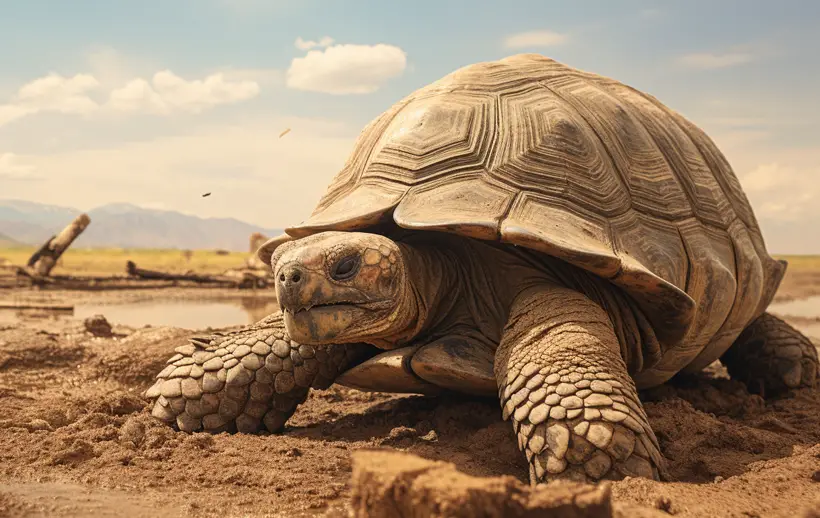
1. Provide some water
The first thing to do to help a dehydrated tortoise is to provide a source of fresh water nearby. Fill a shallow dish with water and place it in the tortoise enclosure.
2. Change the humidity and temperature
Adjust the humidity to match its natural habitat. One of the easiest ways to increase humidity is by spraying water to form a mist over the tortoise. Also, high temperatures within the tortoise’s vicinity can contribute to dehydration. So, ensure you tweak them to the appropriate levels to help your pet recover.
3. Feed it with water-rich foods
Add water-rich foods like cucumbers, tomatoes, and watermelon to your tortoise’s diet.

4. Soak it
Soak the dehydrated tortoise in a shallow, lukewarm water bath for about half an hour. Soaking is beneficial because tortoises can absorb water via the skin and cloaca in small amounts.
5. Consult a vet
Severe dehydration can be challenging to treat at home, so consult a vet if you suspect your tortoise is in dire condition.
What’s The Correct Way To Soak A Tortoise?
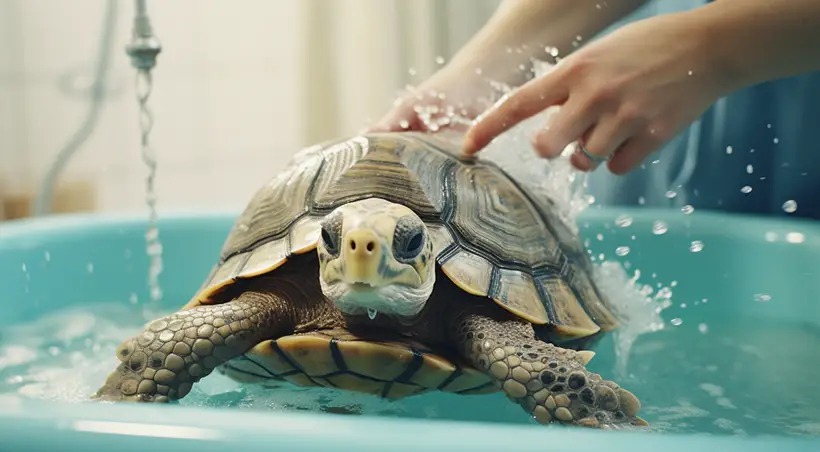
Soaking is a great way to keep a tortoise hydrated or rehydrate it. Here’s how to do it;
- Use a shallow and wide container so the tortoise will fit comfortably without submerging.
- Use lukewarm water and fill the container so the level reaches halfway up the shell.
- Stay with the tortoise throughout the soaking process to avoid accidents.
- Remember that a good soaking session should only last about half an hour.
- Remove the tortoise from the water and let it dry. Alternatively, pat it with a dry towel to quicken the drying process.
What Can You Do To Protect A Tortoise From Dehydration?
If you want to prevent your pet tortoises from getting dehydrated, here’s how;
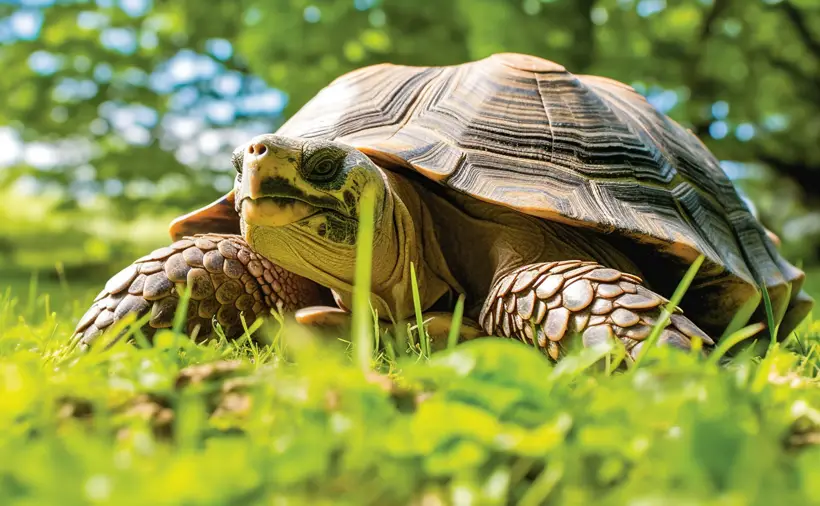
Learn about your tortoise
Conduct research and learn about your tortoise and its natural habitat to determine its care requirements, such as diet, humidity, and temperature levels.
Diet
Adding water-rich foods to the tortoise’s diet is a great way to prevent dehydration. Green, leafy veggies and fruits like watermelon contain a lot of water and will help keep the tortoise hydrated.
Water source
Make sure your tortoise has constant access to water in its vicinity.
Relative humidity and temperature
Maintain the relative humidity and temperature in the tortoise enclosure at the appropriate levels.
Provide shaded areas
Providing shade is essential because it helps the tortoise cool down when temperatures get too high, reducing the chance of dehydration.
Bathing and soaking
Bathe and soak your tortoise regularly to keep the animal’s skin fresh. Soaking also allows the tortoise to absorb water via its skin.
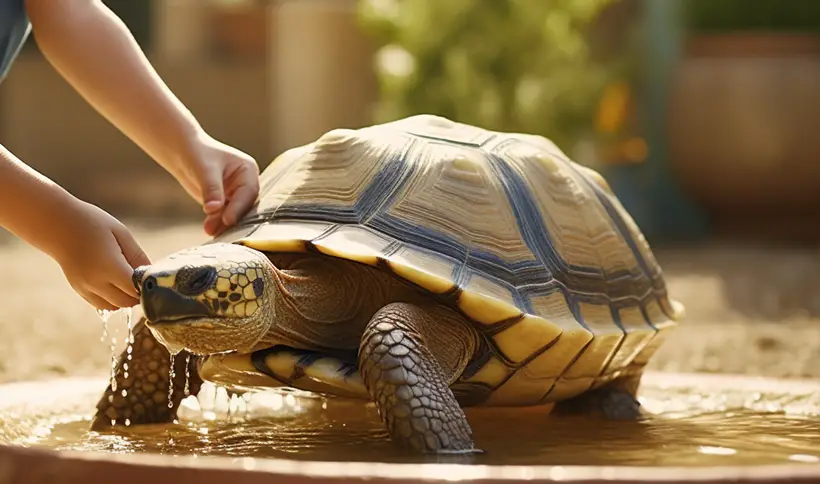
Frequent health checks
It’s important to observe your tortoise regularly for any signs that may indicate the onset of dehydration and other health issues.
FAQs
Here are some answers to common questions about dehydrated tortoises.
Yes, you can give your tortoise tap water. However, if the tap water in your area has high amounts of chlorine and other impurities, you should filter and dechlorinate it before offering it to the animal.
A mature tortoise can live without drinking any water for a year. However, this period varies depending on factors such as diet, size, age, and environmental conditions.
Yes. A tortoise may refuse to drink water when its water needs are met in the diet, when sick, or even in new surroundings.
Conclusion
The first thing you should do when you notice your tortoise is dehydrated is to offer water and change the ambient temperature and humidity. After that, manage the tortoise’s recovery by regularly offering water-rich foods and soaking the pet in water.
Dehydration is prevented by taking simple measures like keeping a water source close and water-rich foods to the tortoise’s diet. Remember that in cases where the dehydration is too severe, home care may not suffice. So, you have to take the animal to a vet for treatment.

